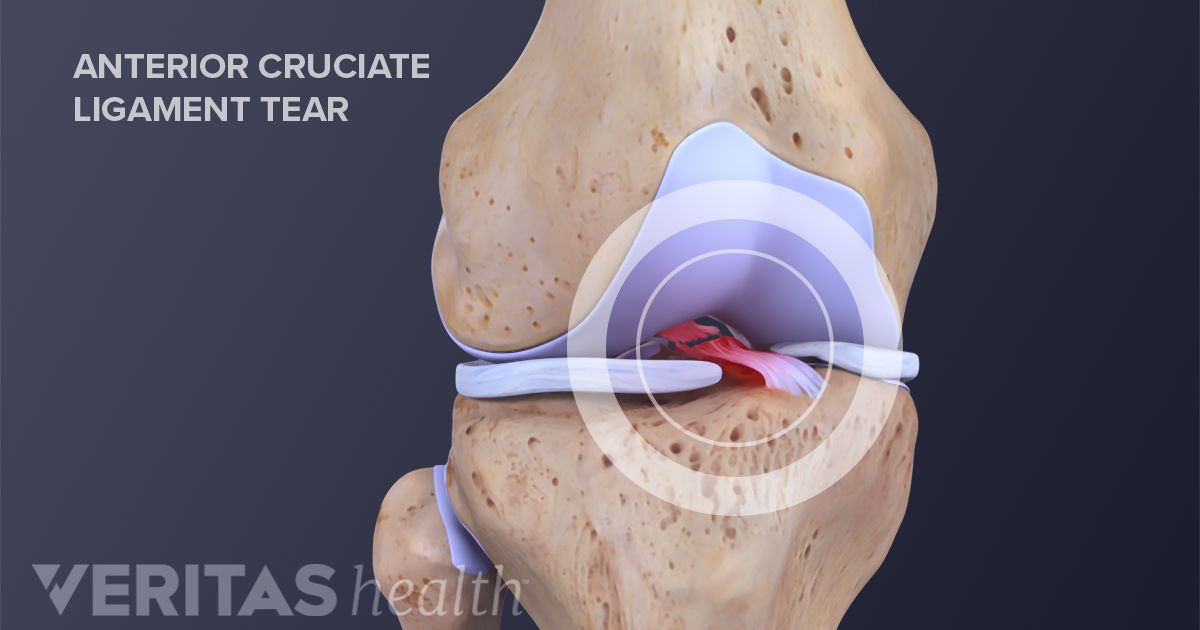

The only way to begin the arduous process of ligament regeneration is for a surgeon to insert tendon tissue, often known as a "scaffold," into the knee.

If gone untreated, the nubs will erode and eventually disappear. Once a ligament ruptures and blood flow is cut off, it cannot repair itself. The more severe the twist or bend, the more severe the injury, and the greater chance you tore multiple ligaments and will need longer rehab. With luck, slight tears can heal with rehabilitation. If you simply tore your ACL, then you might not need surgery-but then again, you still might. A simple stress test determines which tendon or ligament has been injured. In the days following the injury, either visit your family physician or get an exam from an orthopedist. When you injure your knee you should immediately implement R.I.C.E.: Rest, Ice, Compress, and Elevate. According to one recent study, this can prove more detrimental to athletic durability than an isolated ACL injury. You're also at risk of damaging the menisci. Without a functioning ACL, your bones may rub against each other, causing bone bruising and other injuries. But that doesn't mean you're out of the woods. In the case of an ACL tear, you still may be able to walk on the knee, depending on the severity of the injury. If you damaged or tore the ACL, the MCL, and the meniscus (knee pads), you've experienced the "unhappy triad," or blown-out knee. A well-known 1995 study found that over 50 percent of ACL injuries involved MCL damage, while a third included LCL damage. You may have also injured the medial collateral ligament (MCL), which is on the inner side of your knee joint, or the outer lateral collateral ligament (LCL). It may still be connected to one or both of your leg bones, but possibly not.
ACL ANATOMY FREE
What just happened? The ligament may have either torn or snapped into shreds, leaving your leg bones floating nearly free in the knee joint. You know you are injured when you hear and/or feel that blood-curdling "pop" in your knee. It also it stabilizes the knee during all types of movements.

In terms you may have heard before, the ACL connects the thigh bone to the shin bone. Its proximal fibers fan out along the medial wall of the lateral femoral condyle. The ACL originates from deep within the notch of the distal femur. Ligament - A band of fibrous tissue serving to connect bones and hold organs in place.Anterior - Situated before or at the front pertaining to the front plane of the body.So where does the ACL fit in? Let's break it down: It's a complex web of muscles, tendons (which connect muscles to bones) and ligaments (which connect bone to bone). But like every joint, the knee is more than just the meeting of two bones. Without it, we can't even stand, let alone run and score touchdowns. The knee is a vital joint to human activity.

Let's get to know this much-feared injury. But a torn ACL doesn't have to mean "game over" on your athletic life, as long as you do take your rehab seriously and do your homework. The bad news is that in the case of both pros and joes, most-but not all-ACL injuries require surgery and lengthy rehab periods. Injuries occur whenever a knee joint is required to bend backward, twist, or bend side-to-side. No matter the setting, if fast-paced jumps and turns are involved, you're at risk. ACL injuries occur commonly among skiers, trail runners, soccer players, ladies jumping out of pickup trucks, and old dudes playing 500 with their nephews. Approximately 80 percent of sports-related ACL tears are non-contact injuries-including the one that ended Revis' season. However, big hits aren't always to blame. The combination of speed, sudden stops, and physical obstacles on the football field creates a perfect environment for leg injuries-especially to the four ligaments in the knee. The diagnosis, as it has been for several other players early in the season, was a tear in his anterior cruciate ligament (ACL).Īpproximately one in five NFL injuries occur in the knee, and the tears and ruptures in the ACL are the most common knee injury. Revis was carted off the field in the third quarter, his face in his hands, his season done after three games. He isolates receivers so completely that quarterbacks are said to desert them on "Revis Island." But on September 21, 2012, as Revis sprinted to tackle a Miami Dolphin receiver, he momentarily adjusted his sprint and his knee buckled. New York Jets All-Pro cornerback Darrelle Revis is considered one of the greatest athletes in football. One wrong step, abnormal twist, or botched landing, and a year of an athletic potential slumps to the turf. Football is a dangerous game of collisions, dynamic acceleration, and brutal twists and turns.


 0 kommentar(er)
0 kommentar(er)
